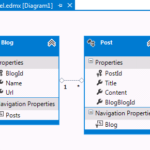Entity Framework (EF) is a powerful object-relational mapping framework that simplifies data access in C#. However, when working with multiple threads, you may encounter a common error message: “A second operation was started on this context instance before a previous operation completed. This is usually caused by different threads concurrently using the same instance of DbContext.” This error typically occurs when multiple threads attempt to access and modify the same DbContext instance simultaneously. In this article, we will discuss how to avoid threading issues with DbContext in Entity Framework.
1. Use a New DbContext Instance per Thread:
One of the simplest and most effective ways to avoid threading issues with DbContext is to use a new instance of DbContext for each thread. Since DbContext is not thread-safe, creating a new instance ensures that each thread has its own isolated context. Here’s an example:
[code]
public void PerformDatabaseOperation()
{
using (var dbContext = new YourDbContext())
{
// Perform your database operations here
}
}
[/code]
By wrapping the database operations in a `using` statement, you ensure that the DbContext instance is properly disposed of after the operation is completed.
2. Use Asynchronous Database Operations:
Another approach is to use asynchronous methods for your database operations. Async methods allow multiple threads to execute concurrently without blocking each other. Entity Framework provides async versions of most database operations, such as `ToListAsync`, `FirstOrDefaultAsync`, etc. Here’s an example:
[code]
public async Task PerformDatabaseOperationAsync()
{
using (var dbContext = new YourDbContext())
{
// Perform your asynchronous database operations here
}
}
[/code]
By prefixing the method with the `async` keyword and using the `await` keyword before async calls, you ensure that the execution doesn’t block the thread while waiting for the operation to complete.
3. Implement Thread Synchronization:
If you must share a DbContext instance across multiple threads, you can use thread synchronization techniques to prevent concurrent access. One commonly used synchronization method is the `lock` statement. By acquiring a lock before accessing the DbContext, you ensure that only one thread can access it at a time. Here’s an example:
[code]
private static object dbContextLock = new object();
public void PerformDatabaseOperation()
{
lock (dbContextLock)
{
using (var dbContext = new YourDbContext())
{
// Perform your database operations here
}
}
}
[/code]
By using the `lock` statement, you create a critical section where only one thread can access the DbContext at a time, preventing concurrency issues.
Remember, it’s important to choose the appropriate approach based on your application’s requirements and design. Creating a new DbContext instance per thread is the simplest and safest method, while asynchronous operations and thread synchronization allow for more complex scenarios.
Threading issues with DbContext in Entity Framework can be avoided by following a few best practices. Creating a new DbContext instance for each thread, using asynchronous database operations, or implementing thread synchronization techniques like the `lock` statement are effective ways to handle concurrent access and prevent errors. Choose the approach that best suits your application’s needs and design to ensure smooth and reliable data access using Entity Framework and C#.



